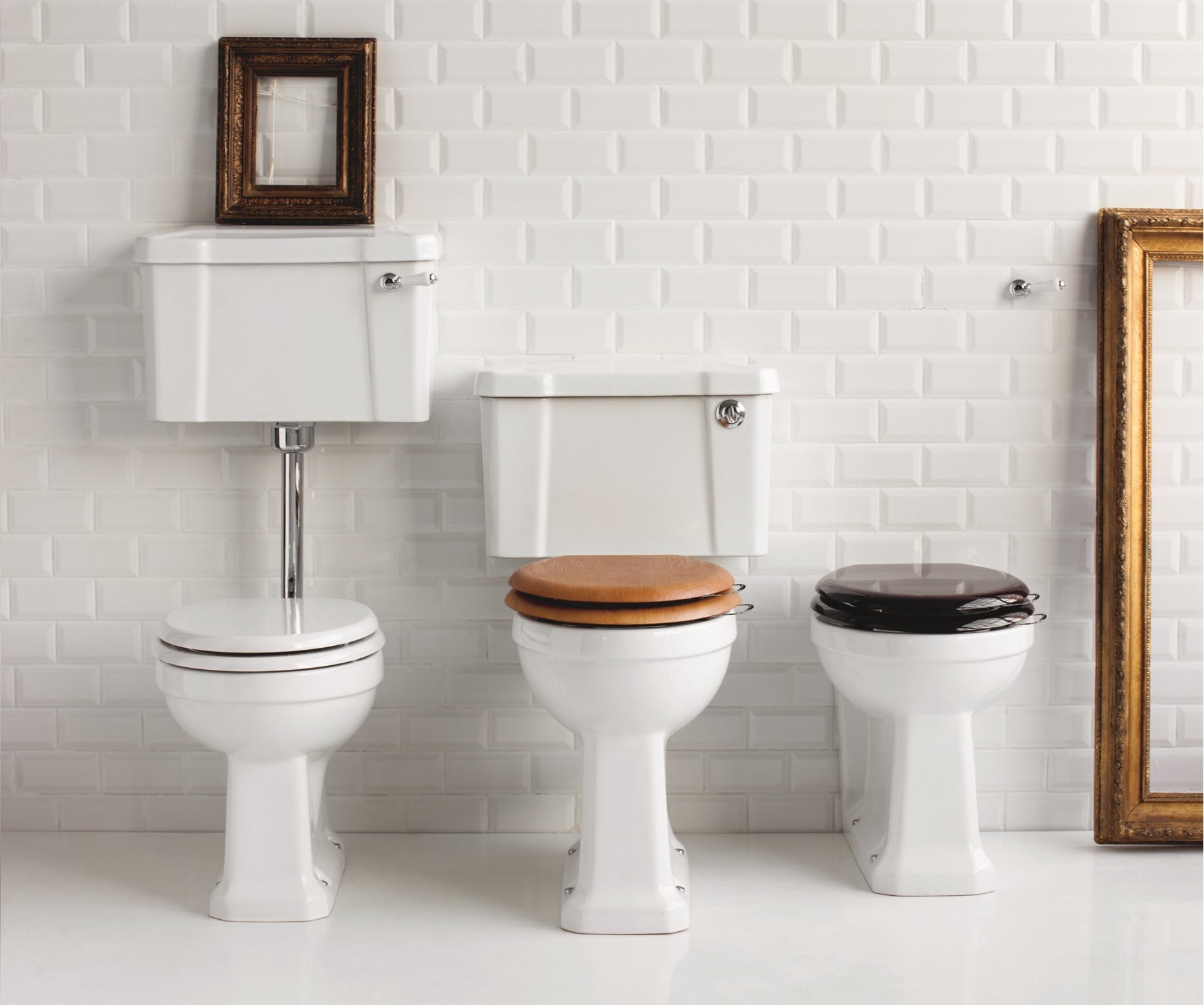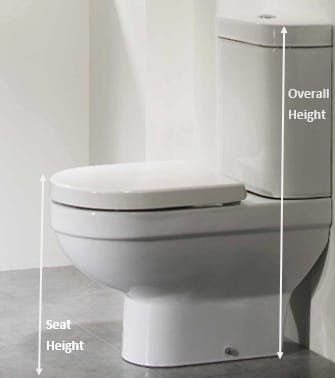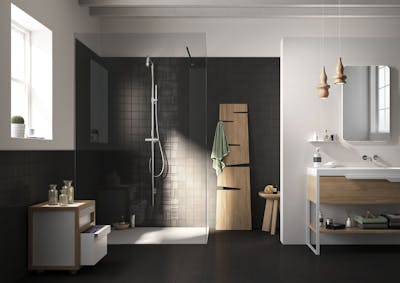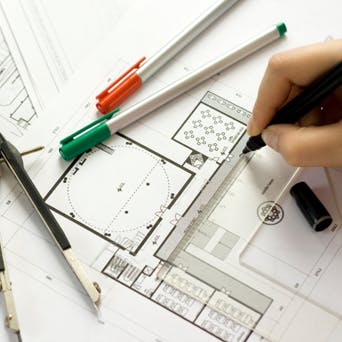Toilet Buying Guide – What’s Best For You? | More Bathrooms
Published: 13 January 2020
It’s believed the average person will use the toilet over 2000 times each year. But with a wide variety of toilets now available, choosing the right one for you is becoming increasingly confusing.
With that in mind, we’ve created our very own toilet buying guide to help you choose the best toilet for you and your bathroom. So, whether you’re renovating your entire suite or just looking to upgrade your toilet, we’ve got it covered!
Types of Toilet
Over the years the variety of toilet options has continued to expand. Now available in a range of styles, shapes and sizes, choosing the right toilet depends on your bathroom design, size and most importantly, your personal preferences.
The most popular types of toilet include:
> Closed coupled toilets
> Back to wall toilets
> Wall hung toilets
> Shower toilets
> High and low-level cistern toilets

What is a closed coupled toilet?
Although it is one of the most popular toilet styles available, not many people know what closed coupled toilet is. Closed coupled toilets consist of a cistern that is connected to, but sits behind, the toilet bowl.
Depending on your budget, you can purchase the cistern and toilet pan as two separate pieces and connect them during installation, or for a more sleek but more expensive option, you can purchase a closed coupled toilet as one piece.
Closed coupled toilets have several benefits: they’re a cost-effective option; they’re available in a range of designs and all the pipework is hidden, providing an easy-to-clean, minimal design.
.jpg?auto=compress%2Cformat&cs=strip&ixlib=php-1.1.0&s=4fdde30237fdae2a3f5be7e2462712d7)
Back to wall toilets
Great for small bathrooms, back to wall toilets are floor standing toilets that include a cistern hidden behind a wall or specially designed unit.
Back to wall toilets make the most of unused space and will make smaller bathrooms appear more spacious. Depending on your design choice, the built-in cistern unit can also be used as a shelf, or in some cases double up as a sink area.
Back to wall toilets are an ideal space-saving solution, and their clean and modern design appeals to many. The hidden pipework is another benefit, as it makes them easy to clean.
.jpg?auto=compress%2Cformat&cs=strip&ixlib=php-1.1.0&s=dda11b5f2a45420215b316dba93e0735)
Wall-hung toilets
With wall hung toilets, the cistern is hidden in the wall, and the toilet bowl is mounted to the wall and raised off the floor. This floating design creates the illusion of a bigger bathroom as it opens up visible floor space.
As a new wall frame will need to be fitted for the wall hung toilet, we recommend this toilet option for bathroom renovations as opposed to simply replacing your old loo with something new. Wall-hung toilets add a contemporary element to any bathroom, and by increasing visible floor space, can make your bathroom appear larger. They can also be hung at your choice of height – within reason!

Shower toilets
Growing in popularity, shower toilets include a bidet function that gently cleans and dries your intimate areas. The flush and wash facility is powered by the push of a button or remote control.
These are a great option for those with limited ability, or for adding a touch of luxury to your bathroom suite.

High and low level cistern toilets
Ideal for bathrooms with high ceilings, high level cistern toilets include an on-show cistern mounted high on the bathroom wall. The cistern is connected to a floor standing toilet bowl with a long flush pipe. The flush mechanism is usually either a lever or pulley design.
Similar to high level cistern toilets, low level cistern toilets also include a cistern mounted to the wall, but the cistern is mounted in a lower position. These traditional toilets will go well in traditionally-designed bathroom suites, and if you have high ceilings, they can be a smart use of your available space.
Toilet Pan Shapes
Toilet pans (also known as toilet bowls) vary in shape and size. Once you’ve chosen the type of toilet you’d like, you’ll need to decide on the most suitable toilet pan dimension for your bathroom size, whilst considering personal comfort.
The most popular toilet pan shapes include:
Rounded - suited to traditional bathroom designs, rounded toilet bowl’s circular shape takes up less space than other toilet pan shapes.
Elongated - known for being more comfortable, elongated toilets are available in a range of styles. However, they tend to take up more space and can be one of the more expensive options.
D - shaped - a popular option for contemporary bathroom designs, D-shaped toilets consist of a stylish curved design.
Squared –Squared toilets are the perfect match for those with a minimalist design in their bathroom.

Toilet Pan Height
When choosing your toilet pan size, you need to consider the height, width and depth.
From the floor to top of the toilet pan, the average height of a toilet is approximately 15 -16 inches. The average height from floor to the top of the cistern is approximately 30 inches.
The right height is based on your bathroom needs. For example, if you are choosing a toilet for a family bathroom, you may want to choose a toilet pan smaller in height that is easier for younger children to use. Similarly, taller toilet pans, known as comfort pans, can be more comfortable for elderly or taller people.
Toilet Pan Width:
Depending on your choice of toilet design, the average width of a toilet (including the length of cistern) is approximately 30 inches.
Toilet Pan Depth:
The average depth of a toilet pan is approximately 19 inches. The average depth from the front of toilet seat to back of the cistern is 29 inches. We recommend you leave at least 24 inches of unused floor space between the front of your toilet pan and any bathroom amenities (including doors) to ensure you can sit comfortably and have space to move.
Small Toilet Dimensions
If you have limited bathroom space, toilets that are smaller in size are now available.
In-tank toilets have no cistern, as the flush facilities are within the toilet bowl. In-tank toilets are approximately 19 inches in height, as opposed to the average toilet height of 30 inches.
Short projection toilets are also available for those with limited floor space.
What is a short projection toilet?
Short projection toilets are slightly shorter in depth than the average toilet. The toilet pan is approximately two inches smaller, saving floor space without making the toilet too small to use.
How to Measure a toilet seat
Before you finalise your toilet c
What you’ll need:
- A tape measure
- Pen or pencil
- Paper
Measuring toilet height
When measuring your toilet height you will need to note down the measurement of both the seat and your toilet’s overall height.
How to measure overall toilet height
To measure your toilets overall height use your measuring tape to measure the length from the floor to the top of your toilets tank.
How to measure toilet seat height
Similarly for the toilet seat height measure from the floor to the top of your toilet seat.

How to measure toilet depth
To measure the depth, simply measure from the front of the toilet rim to the back of the toilet tank.

How to measure toilet width
To found out your toilets width you will need to measure either the widest part of the toilet bowl or the tank.

How to measure your toilet rough-in
The toilet rough-in is the space between the wall located behind your toilet and the centre of your waste pipe.
To measure the rough-in use your tape measure to measure from the back of the wall to the middle of the toilet bolt caps (the caps holding your toilet to the floor).
The average measurement of a rough-in is usually 30 centimetres but can be as high as 35 centimetres.
Other things to consider when buying a toilet
> Visit a bathroom showroom to view your toilet of choice before purchasing. This will allow you to see if the toilet is suitable for your needs before making a commitment.
> If you’re replacing your toilet in the same space, measure your current toilet dimensions (height, depth and width) to ensure your new toilet can fit in the space available.
> Consider your budget – the toilet instillation cost will be higher if you choose to position your toilet in a new area, due to the extra plumbing costs of moving the waste pipe.
> Flushing options – if you wish to save money, opt for a dual flush as opposed to single flush, as this will allow you to choose the power of the flush and amount of water used depending on your toilet use.
> Toilet additions - there are several toilet seat options available, including plastic and wooden, alongside heated and soft close.
If you wish to gather more information on toilets and or
wish to further discuss your bathroom renovation requirements,
book your free,
no obligation design appointment
with one of our senior
designers today
Share this Post



.jpg?auto=compress%2Cformat&cs=strip&ixlib=php-1.1.0&s=4fdde30237fdae2a3f5be7e2462712d7)
.jpg?auto=compress%2Cformat&cs=strip&ixlib=php-1.1.0&s=dda11b5f2a45420215b316dba93e0735)








.jpg?auto=compress%2Cformat&cs=strip&fit=clip&h=400&ixlib=php-1.1.0&w=400&s=5eeedabe07060d4a519a0b98e2cb700e)

















